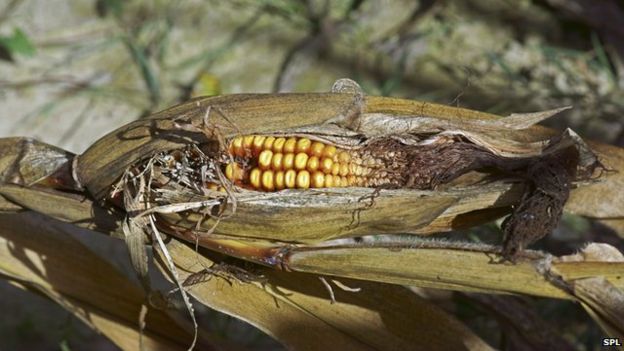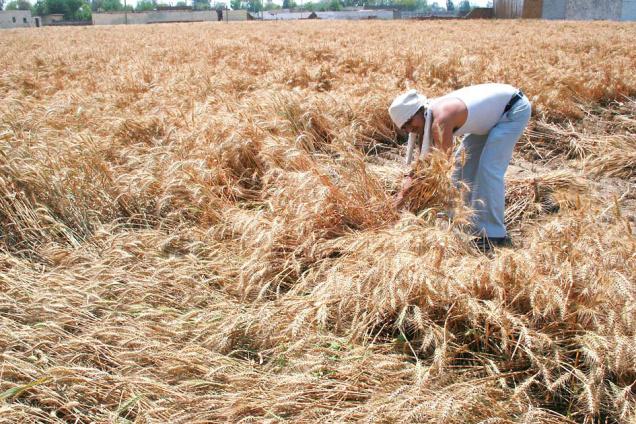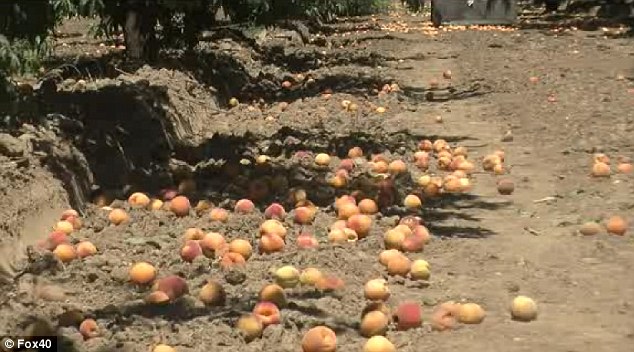Environment
Food Production Could Hit Rock Bottom With Increase In Global Warming
Let’s take a quick recap of our geography lessons. global warming causes a global climate change, which in turn has many other adverse effects on the environment such as drought, increase in water levels, etc. But how does that have anything to do with your food? It does.
Here’s The Deal
Climate change is increasing the risk of severe ‘food shocks’ where crops fail and prices of staples rise rapidly around the world. These shocks to global food production will be three times more likely within 25 years because of an increase in extreme weather brought about by global warming, warns a new report.
The report, which was supported by the Foreign and Commonwealth Office, stresses that extreme weather events such as floods or droughts are just as significant as rising average temperatures and rainfall.
The likelihood of such a shock, where production of the world’s four major commodity crops – maize, soybean, wheat and rice – falls by 5-7%, is currently once-in-a-century. But such an event will occur every 30 years or more by 2040, according to the study by the UK-US Taskforce on Extreme Weather and Global Food System Resilience.
The After Effects
Such a shortfall in production could leave people in developing countries in “an almost invalid position”, with the US and the UK at maximum risk to the resulting instability and conflict, said co-author Rob Bailey, research director for energy, environment and resources at Chatham House.
Prof Tim Benton, professor of population ecology at the University of Leeds and co-author of the report, said that the compound effects of climate change and rising demand from a growing population could create a “very frightening” situation.
“The food system is increasingly under pressure because demand is growing and our ability to supply it is much more constrained. On top of that we have climate change affecting where we can grow things.
“If we are coping with demand increases by sustainable intensification and suddenly we have a catastrophic year and lose a significant chunk of the world’s calories, everybody will feel it.”
Such shocks could plausibly see the UN’s food price index – which measures the international price of major commodities – rocket by 50%, based on an analysis of how the market would likely respond.
The Affected
Increase in food production instability will mostly affect developing countries experiencing high levels of poverty and political instability, such as countries in the Gulf or Sub-Saharan Africa.
Bailey said: “The most vulnerable countries, which will be the worst affected – whether at the macroeconomic level or at the household level – the poorest households spend upwards of 50% of their income on food. If you are in a situation where food prices are increasing by 50-100%, that leaves them in an almost untenable position.”
But the larger economies will be able to bounce back for a short period as they would be more able to absorb rising food prices, he said “countries like the UK and the US are very much exposed to the indirect consequences”.
Extreme weather events in North and South America and north-east Asia – where production of the four major crops is concentrated – are likely to have the biggest impact on global food production.
Future Shocks & Shock Absorbers
As climate change causes temperatures to rise even higher in the second half of the century, even more serious food shocks – where production drops by up to 10% – are also likely to occur much more often by 2070.
The UN issued a warning last year that global food production must rise by 60% by 2050 in order to avoid social unrest and civil wars caused by serious food shortages. Rising demand is caused by increased wealth and a growing world population that is expected to reach 9.7 billion by mid-century.
The report recommends that governments need to work together on the international level, with significant investments from the public and private sectors required to make the global food system more resistant to climate change.

























